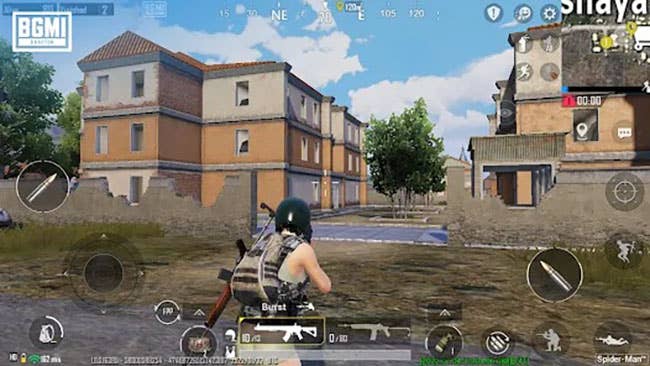India’s gaming revenues rose 23% in the final fiscal 12 months to $3.8 billion – and are expected to practically triple in the following five years.
That is in accordance to a brand new report by India-based enterprise capital agency Lumikai, created in collaboration with Google and Deloitte. A number of the report’s shopper knowledge was based mostly on a survey of two,269 India smartphone customers.
In accordance to this 12 months’s ‘State of India Interactive Media and Gaming Analysis’ report, cell games accounted for 30% of the nation’s $12.5 billion new media market in the fiscal 12 months ending March 31, 2024. New media additionally encompasses video content material, animation and VFX, audio streaming and social media.
Actually, games revenues have been practically degree with the $3.9 billion from video content material, the biggest new media phase.
And games are projected to reach $9.2 billion in income by the tip of the 2029 fiscal 12 months.

Lumikai’s founding normal accomplice Salone Sehgal tells GamesIndustry.biz the Indian games market has been affected by misconceptions over the years – for instance, that gamers solely have interaction with real-money games – however the knowledge demonstrates the business is a lot broader.
“The [typical] narratives of ‘Indians do not play games’ and/or pay for games – they’ve been debunked utterly,” she says. “So if we take that off the desk, if you happen to’re in search of the following billion players, they are going to come from the Indian market.”
In accordance to the report, India stands because the world’s second largest cell games market with 15.2 billion downloads in the 12 months ending March 31, 2024.
In the meantime, the entire variety of gamers rose by 4% to 591 million in the previous 12 months.
Sehgal tells us that, whereas most markets noticed a spike in gaming revenues throughout the early years of the COVID-19 pandemic, the lockdowns helped increase cell games and draw each income and gamers away from their real-money counterparts in a means that hadn’t occurred earlier than.
“Put up-COVID is when gaming and cell gaming largely grew to become a prevalent phenomenon,” she explains. “Actual cash gaming in India is a decade-long phenomenon, it began again with the earliest firms that have been arrange about ten years again, and over these ten years they constructed a really massive userbase, which acquired accelerated throughout 2019 to 2021. Whereas UPI [Unified Payments Interface] has unlocked free-to-play gaming, and that solely began occurring actually throughout COVID. So free-to-play has turn out to be a giant phenomenon.”
The Unified Funds Interface is an India-only prompt fee system that first launched in 2016 and permits customers to deal with digital funds through financial institution accounts with out the necessity for debit or bank cards. As increasingly Indian gamers have begun utilizing it, paying for video games has turn out to be simpler – case in level, 83% of all survey respondents who spend cash on games want utilizing UPI to make in-game purchases.
“Should you’re in search of the following billion players, they are going to come from the Indian market”
One other eight million gamers started spending cash on cell games in the previous 12 months, bringing the entire variety of paying gamers to 148 million.
The variety of in-app purchases made rose 41% year-on-year, making it the fastest-growing supply of that $3.8 billion income – and this has been primarily pushed by the rising reputation of midcore games corresponding to Battlegrounds Cellular India (Krafton’s India-only model of PUBG), Conflict of Clans, and Garena’s Free Hearth Max.
In accordance to Lumikai’s survey, 64% of customers who pay for actual cash games additionally spent on midcore titles in the previous 12 months.
25% of all players surveyed stated they’ve spent cash on games, unchanged from final 12 months, whereas 18% stated they now make games purchases having solely beforehand loved free-to-play games with out spending.
The typical income per paying consumer rose 15% year-on-year, and once more, Sehgal believes the rise of midcore games is an important issue. Particularly, she credit the launch of PUBG – prior to its Battleground Cellular India refresh – because the turning level.
“Beforehand it was thought a 1GB recreation monetising through microtransactions and IAPs was not going to work in India,” she explains. “PUBG really made that potential. Now with Battlegrounds Cellular India, Free Hearth Max, and Conflict of Clans, we see different titles that are scratching that midcore itch and international publishers at the moment are seeing revenues from simply in-app purchases in India come by means of.
“Once you add UPI to that, which allows very seamless commission-free small ticket transactions, that is actually unlocking monetisation [in India].”

The report provides a deeper take a look at what players are spending on, with 66% of paying customers saying they purchase in-game forex. 61% say they purchase performance-based upgrades in contrast to the 51% who purchase cosmetics and different visible objects. Solely 36% of spending gamers purchase loot bins and different bundles, whereas 24% make investments in season passes.
Sehgal provides that different misconceptions about India’s games scene advised that the viewers was “largely male, largely city, and largely a wealthy prosperous phenomenon.” Once more, the information proves in any other case; the variety of ladies who play video games grew from 41% in FY 2023 to 44% in FGY 2024, with Sehgal including that they are principally enjoying informal titles.
66% of players are based mostly in non-metro cities, whereas 43% are described as “first-time earners” in the 18 to 30 age group.
Most of India’s players are on lower-end cell units; 43% use smartphones that value between $200 and $400, whereas 38% are on ones that value lower than $200. This, Sehgal explains, means they’ve entry to low cost knowledge and fairly good cell units.
Mix this with the propensity for digital funds, the rise in paying behaviour, and the truth that over 40% of gamers are between 18 and 30, and Sehgal says you may have “the proper recipe of why Indians have now began to pay for games.”
The typical period of time spent enjoying video games is additionally on the rise, up 30% to 13 hours per week – double the period of time spent on social media.
“Beforehand it was thought a 1GB recreation monetising through microtransactions and IAPs was not going to work in India. PUBG really made that potential”
Wanting ahead, Sehgal says there are many alternatives for each India-based games companies and abroad publishers – and the previous are notably nicely positioned to capitalise on the expansion of gaming in India.
“60% of players say they need to see games that symbolize our native tradition and language,” Sehgal explains. “If we apply that very same lens to leisure, Indians eat lots of international content material, however we additionally eat very mass market home content material. That is not being mirrored in our games immediately – our games are largely made by international publishers. There is a dearth of India-specific or cultural games.
“China, for instance, has an enormous consumption of games that are constructed for the Chinese language market – however all the issues round approvals that is occurred in the final couple of years in China, however China’s home market was constructed by fueling and basically constructing for the home market.”
In the meantime, she advises abroad publishers – particularly from the West – that “there are variations required” if you happen to’re concentrating on India.
“The likes of a Riot or Krafton have very closely began to localise. They’ve executed [partnerships] with native celebrities, they’ve built-in native characters, they’ve executed occasions from Indian festivals – these are getting mirrored in their games. Their pricing is reflective of India pricing. So all of these issues are necessary to preserve in thoughts if one is to attempt to faucet into the India market.”
